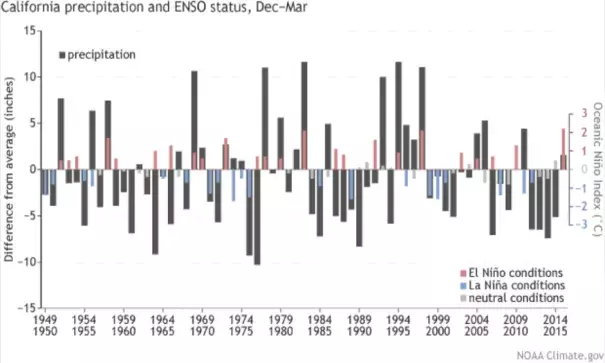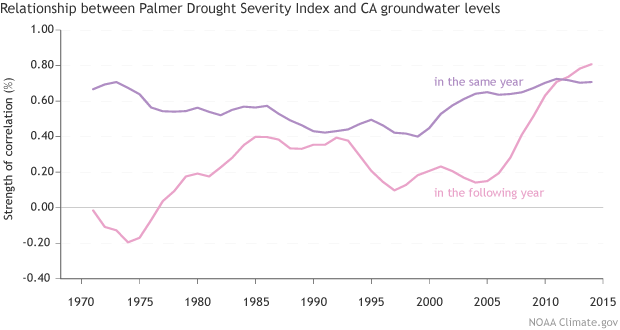The long arm of the California drought

This past winter, most water agencies across California were counting on the strong El Niño to produce surplus water, helping to increase groundwater and make up for what’s been pumped out due to the severe drought. Unfortunately, precipitation during the winter of 2015-16 was barely above the long-term average in the state, despite stormy weather in the northern part of California...
The drought was somewhat alleviated in Northern California, thanks to these rains. However, new evidence suggests that the groundwater level in California’s Central Valley will continue to decline this year. We examined about 55 years of data from nearly 500 wells, and also used estimated water storage from Gravity Recovery and Climate Experiment (GRACE) satellites.
Historically, drought and reduced groundwater storage occurred almost hand-in-hand in the Central Valley. When drought conditions ended, groundwater storage would normally rebound – this is the relationship we see in records from about 1960 - 2000. But our recent study found that this relationship has changed over the last decade and a half.
In the data from the past fifteen years or so, scientists found that groundwater storage continued to decline for a full year after drought has ended. So, whereas previously when drought ended, groundwater resources would begin to recover, now groundwater continues to decline, even through a wet period. It will take more research to understand exactly why this is happening, but it’s possible that the recent tendency toward more intense, longer-lasting droughts in this region has changed the way rainfall and snowmelt are taken up by the soil and recharge groundwater.

Since the 1970s, drought severity in California in a given year has been closely correlated to groundwater levels in that same year (purple line), but not to groundwater levels the following year (pink line). Since the mid-2000s, however, the pink line has climbed steeply, which means groundwater levels have become sensitive to drought for an additional year. Image: Climate.gov / Simon Wang
California’s groundwater has been used to supplement the water supply for households, agriculture, and industry for many years, and there’s been a downward trend in groundwater storage since at least the middle of the 20th century. However, this trend doesn’t explain the recent change in the effect of drought on groundwater supply


